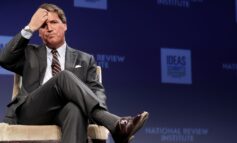On November 4, 2008, the United States will elect a new president, a new House of Representatives, and a new third of U.S. Senate. The elephant in the room is the war in Iraq. Everyone knows it’s there. Everyone knows it will be the biggest single factor determining the outcome of the elections. And no one is quite sure how to deal with it in terms of winning the elections.
Most politicians worry first of all about their own (re)election, secondly about their party’s winning a majority, and only thirdly about ideological issues. Only a small number put ideological issues first. The main candidates for the presidential nominations, and most persons who will be running for seats in Congress, are calculating where to place themselves in order to lose the fewest voters who would normally vote for them, and attract as many voters “in the middle” as possible. Viewed by an analyst, the decisions are not easy to make, and this is reflected in all the hedging that is going on.
Let us start with the possible presidential candidates. It is commonly believed that the Iraq war has shifted votes towards the Democratic candidate, whoever it may be. This seems to be confirmed by the constant polls. But what does a potential candidate conclude from this? It seems the principal Republican candidates are all concluding that they cannot afford to be less than hawkish, lest they turn off their last reliable voters, the so-called base. But they also seem to conclude that they should take some distance from Bush, in effect blaming him not for a wrong position but for incompetence in implementing it. And they are obviously hoping that the main Democratic candidates will do or say something that they can pounce on as “unpatriotic” and thereby win back voters “in the middle.” They may also be counting on some dramatic event that might rekindle popular anger against the “enemy” and thereby win back disaffected Republicans and independents to the Republican camp. As Sen. Chuck Hagel, himself a disaffected Republican, has said, “the Republican party has won two elections on the issue of fear and terrorism [and] it’s going to try again.”
It is very clear that the main Democratic candidates are making more or less the same analysis. They want to sound mildly dovish on the war in order to appease their base, but not so much so that they can be tarred effectively as somehow “treasonous,” lest they lose the disaffected Republicans and independents. They are being cautious, feeling that the election of a Democratic president and Congress is theirs to lose, not theirs to win. In any case, taking a much stronger line in Congress seems to most of them pointless, since they don’t really have the votes to pass anything. They don’t have the 60 votes in the Senate even to get a formal vote on their proposals, and they certainly don’t have the 67 to override a certain presidential veto. In the latest debate among the Democratic candidates, none of them was ready to pledge a total withdrawal of all troops by 2013. Clearly, this cautiousness is increasingly irritating their more militant base. Still, thus far there is no sign that the strong antiwar sentiment among these more militant voters will lead to a serious defection from the Democratic candidate for president.
The real issue is in the congressional elections. Already in 2006, the Democratic strategists were deeply divided between those who were sure that the more “moderate” the Democrat, the more likely the local victory, and those who argued exactly the opposite, that only an ideologically-bold candidate could rally the voters. The actual 2006 results seem to indicate that neither argument was correct for all districts. And so we may expect the tactical debate to continue.
In two-party (or even multiparty) elections, the important tactical question is not whether being more “centrist” or being more “radical” is more likely to be effective. The real question is what is being defined as the “center.” In the last 25 years in the United States, the Republicans have been able to push the definition of “center” further and further to the right. In 2006, the curve swung slightly back. The undecided question is whether between now and the 2008 elections, what is defined as “center” in the United States moves still further left. This is where the public rhetoric plays a key role, as well as the “unexpected” political happenings. In a sense, it is Cheney versus MoveOn in hand-to-hand rhetorical combat.
Were MoveOn to prevail, even somewhat, it would not matter much how “centrist” a line the Democratic presidential candidate put forward in the campaign. The election results would largely determine the post-election political stance. But if Cheney were to prevail in the rhetoric, it might not keep a Democrat from becoming president, but it would make it very difficult for this president to withdraw quickly from Iraq.
Immanuel Wallerstein, Senior Research Scholar at Yale University, is the author of “The Decline of American Power: The U.S. in a Chaotic World,” (New Press). ©2007 Immanuel Wallerstein, distributed by Agence Global





Leave a Reply